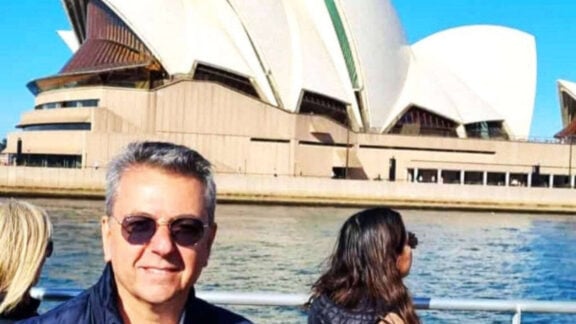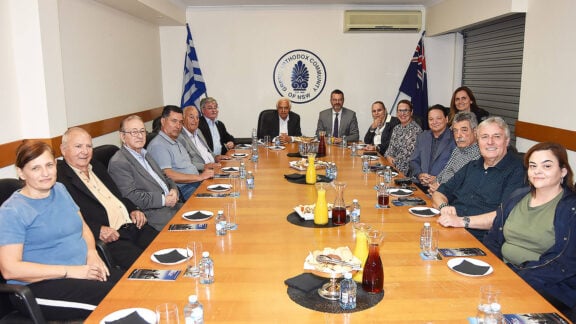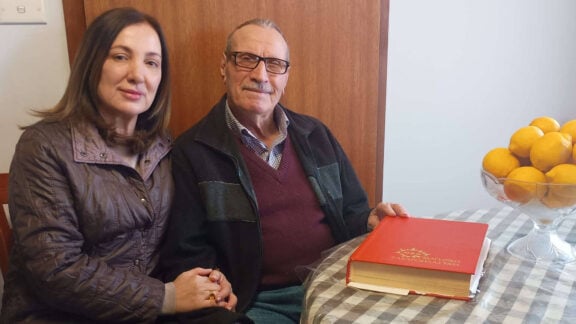The Australian Crime Commission’s first public report has identified ice as the biggest threat facing our society, warning that Australia is in the grip of an irreversible violent crime rise, increasing drug addiction to unprecedented levels.
At least 60 per cent of my cases do come from European backgrounds and sadly most are Greek and a lot of people we deal with come from good and well-off families, too. Ice is huge and everywhere – Jim Mangioros
The ‘mind-eating, life-ending drug’ has had a harrowing impact on Australia’s indigenous and multicultural communities. The illicit substance has been found to be fuelling most violent and offence related predicaments within the Greek community as well.
Neos Kosmos talked to Helen Andrianakis, who has been working as a prison clinician for more than 30 years, and Jim Mangioros, founder of the non-profit organisation Endless Horizons.
“It’s true that crime syndicates never cease to adapt to new legislation and law enforcement, baring new holes in the system,” Jim Mangioros tells Neos Kosmos.
“They are pushing multi-drug and alcohol-combined use, they even provide the public with online recipes to produce the highly toxic drug.
“These are accessible to young kids. I have been dealing with cases of 14-year-old addicts. Even some 12-year-olds. It’s devastating,” he adds.
Jim Mangioros and his wife Neda have devoted their lives to providing young people coming from underprivileged and sometimes ‘hard-core’ backgrounds with support and counselling, education, as well as food parcels, meals and clothing. They even do mediation, bringing families together through rehabilitation. Endless Horizons deals with youths tormented by addiction, which most of the times leads to human trafficking and crime.
“The team is working closely with rehab centres and shelters throughout Victoria,” he explains.
“We have many teenagers coming from broken homes, children we found living on the streets in deprived and unimaginably hard conditions.”
“We can’t disclose names and a lot of information about what we do as we ourselves are dealing with crime syndicates, facing threats. We sometimes keep information from the teens’ families, in order to protect them till they come out of the addiction and this vicious circle,” Mr Mangioros continues.
He believes that it is not until people comes off the drugs that they realise how much help they need.
“When people are on drugs, especially with ice, they are all over the place. Living in denial.”
“When they are sober and more alert, the destructive effect of their addiction is obvious,” he stresses.
“It is not an overnight process. We usually deal with people from all stratas and they all need at least 6 months to eve begin to realise this is killing them-if they even do.”
Jim Mangioros highlights that Australia and Melbourne is dealing with a massive epidemic, which is killing its multicultural communities first. The Greek Australians are no exception.
“At least 60 per cent of my cases do come from European backgrounds and sadly most are Greek and a lot of people we deal with come from good and well-off families, too. Ice is huge and everywhere,” he tells.
“There is a lot of ignorance and curiosity around it. It’s a peer pressure thing amongst youngsters. Trying it out is ‘cool’, but it’s highly addictive.”
“People take it to numb their pain, numb their life issues but it only makes things worse,” he says.
Middle Eastern and Asian ice-exporting countries are targeting the Australian market, which has become the dominant ‘client’ since 2010. Ice is penetrating security checks and borders into Australia from 50 countries, while Australian ice users pay 6 times the amount of money a gram costs in China. Dealers are massively pushing ice through urban, rural and regional communities as 60 per cent of organised criminal gangs, including bikies, are profiting from the importation, manufacture or trafficking.
“The fight against ice is a matter for everyone,” Justice Minister Michael Keenan said and his cry is far from mistaken.
“I have looked after people from the age of 16 to 60 and I assure you, ice makes no discrimination,” prison clinician Helen Andrianakis tells Neos Kosmos.
“I keep coming across a lot of Greek girls hooked on ice that end-up becoming sex-workers or strippers. Ice keeps them going, numbs them, and fries their brain- which is perfect for the brothel owners who can profit more on their expense.”
“However, it’s not only delinquents, offenders and kids from broken homes. Not long ago, I treated a gentleman at the age of 55. He’d never touched anything in his life, until he did.”
The situation is not improving, the cases are on a constant rise and it is getting dangerous and harder for clinicians to work, according to Ms Andrianakis’ experience.
“Ice causes psychosis and long-term psychological damage, leading to daily violence, accidents and aggression, suicides and homicides even,” she admits.
“People do not realise what ice is doing to them, how degenerating and destructively chemical it is. It blows my mind what this drug does to people every single time.”
“People are hallucinating. I had a Greek girl patient whose mother and sister died from the same addiction. She hadn’t slept for 6 days and she was violent and uncontrollable, constantly hurting herself and became suicidal as the voices she was hearing were urging her to end her life unless she found ice.”
Coming from a Greek background and being a clinician for so many years, Ms Andrianakis finds the lack of Greek speaking rehabilitation centres and shelters in Melbourne, disturbing.
“Considering the constantly increasing numbers of Greek Australians on ice, I’d say it’s necessary,” she tells.
“There are many newcomers from Greece, who have burned a lot of bridges along the way, facing many financial and integration difficulties, therefore easily coerced into drug-use and trafficking.”
The landmark report concluded that unless the Australian government, state and territory governments work closely with non-government organisations, industry and the communities- the ice market will continue to grow. However, can this case of public concern rest merely with law enforcement and government policies or are the statistics indicative of a family and educational weakness to engage effectively as this vicious enemy trail-blazes its way through all walks of this nation’s life?








